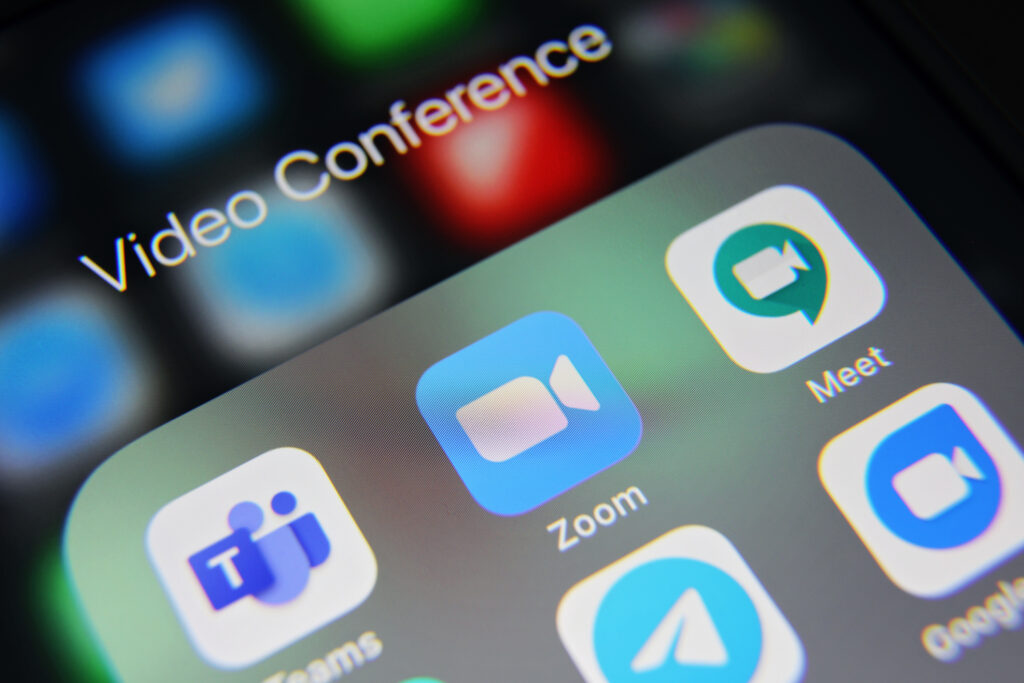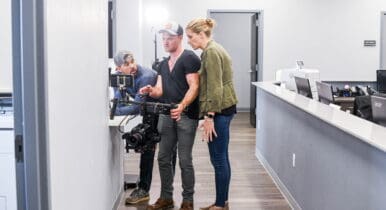How a Devotee of In-Person Collaboration Learned to Embrace Remote Work
MeanGreen Media’s Glenn Greenstein still believes in the importance of face-to-face communication, but in managing his firm through the pandemic he’s found that remote has led to even better work.

Glenn Greenstein was such a believer in in-person collaboration his company invested in building out a post-production facility with 10 edit rooms inside the Beltway. But that was in the pre-COVID times. While MeanGreen Media’s facility is still in use, Greenstein has found himself managing collaboration between producers, editors, creative directors and account strategists spread out across the country via Google Meet.
“It’s leading to better work,” he told C&E. One reason, explained Greenstein, is that the stress level for his creative team is lower.
“When you’ve got 20 to 30 people all working on deadline on multiple projects [in the same facility], there’s an opportunity for emotions and stress to be passed like the virus from room to room,” he said. “Working with our team remotely, we’ve been able to manage that part of the process better as well. The energy level seems to be just as high and the stress seems to be lower.”
His team is also happier. Greenstein has creative staff spread out from DC to Gaithersburg, Md. to Charleston, S.C., and as far away as Colorado and Arizona. Some have even moved more than once during the pandemic. Regardless of locale, they haven’t missed a beat.
“It’s important to us to support the whole person. It’s part of our values as a company and it serves us and our clients well if we have happy people working for us,” he said.
His pandemic management experience has also taught Greenstein the fallacy of the water cooler theory — that creativity is fostered best by employees gathered in an office setting. Since the pandemic started, Slack has become the new place to gather. “We’ve got a Slack channel for every production and for each topic of conversation with our team,” he said, noting that his team uses the platform to share videos or artwork for inspiration. “In addition to getting the chit chat, you’re also getting more substance than when we were conducting [conversations] in person.”
Still, Greenstein remains an advocate for face-to-face communication, although the “diehard” for in-person collaboration has accepted that Google Meet serves that purpose.
“While we’ve embraced the remote workflow, there is no replacement for face-to-face communication,” he said. “Now, instead of gathering everyone into a room, we’re gathering everyone into a Google Meet. It’s the same people and the same messages, and more importantly, it allows communication as if you’re in the same room. You can’t replace that with Slack and text messaging alone.”
Another thing he’s learned from the pandemic is that “there’s never one right way,” he said. “There are multiple solutions available and sometimes it takes a foot kick in the ass to generate them.”
Despite the success they’ve had managing production remotely, Greenstein wants at least one aspect of the pre-COVID times to return: “I look forward to the day when we can gather for work or drinks, when we want to, without the fear of anyone getting sick,” he said. “I really can’t wait for that day.”

